OVERVIEW
Building Information Modeling or BIM is the process of generating and managing building data and its various components during its life cycle. Using three dimensional, real-time, dynamic building modeling software to increase quality in building design and construction, the process produces the Building Information Model. BIM encompasses building geometry, spatial relationships, geographic information, quantities and properties of building components. Unlike past 3D innovations in the building industry, BIM is more than a conceptual modeling tool. When the modeling software is used by manufacturers and principals involved in a building project, the resulting BIM is usable for fabrication. It involves ground-up reality rather than top down theory.
BIM achieves such improvements by modeling the actual parts and pieces used to construct a building. This is a substantial shift from the traditional computer-aided drafting method of drawing with vector file-based lines that combine to represent objects. The objects used in BIM are scaled to represent the actual dimensions of materials used to construct various types of projects.
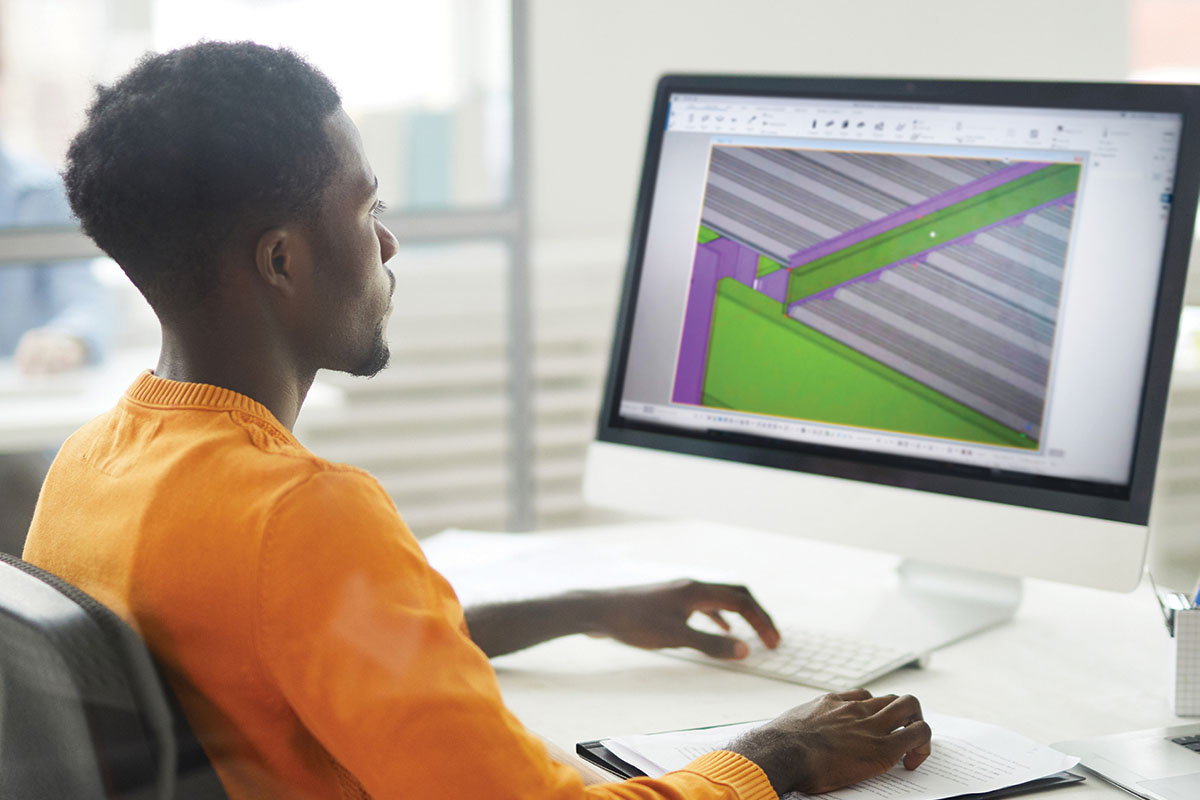
BIM MEETS VULCRAFT
Vulcraft is pairing their proven track record of quality and service with the future of 3D modeling to give fabricators, erectors, general contractors, engineers and architects an edge over competitors in the market. Providing customers with a detailed model that can display a replica of their building, BIM leads to confidence and peace of mind for the life cycle of the project.
Vulcraft’s distinct advantages include multiple platforms, including Revit®, Tekla, and SDS/2, designed web layouts, specialty joist profiles and seat profiles with slots.
DESIGN TOOLS
Vulcraft has created several design tools to aid in the specification and detailing of our products. These tools have been developed and enhanced over time based on input from engineers, architects, structural fabricators and other tool users. We offer tools for both Revit and Tekla, and have assisted in the development of joist components that are packaged with SDS/2.
NUBIM® FOR REVIT
Our NuBIM for Revit add-in allows users to specify and model all parallel chord joists and joist girders available from Vulcraft as well as a number of common special profile joists, Ecospan and composite joists. Users have the ability to apply a variety of common loading conditions to all joists, as well as create load tables and diagrams. All Vulcraft and Verco deck profiles can be added to standard Revit floor and roof components through the add-in also. When your project is complete, a file can be exported containing all information related to our products, which can be sent to your Vulcraft sales rep to aid in the quoting and detailing process.
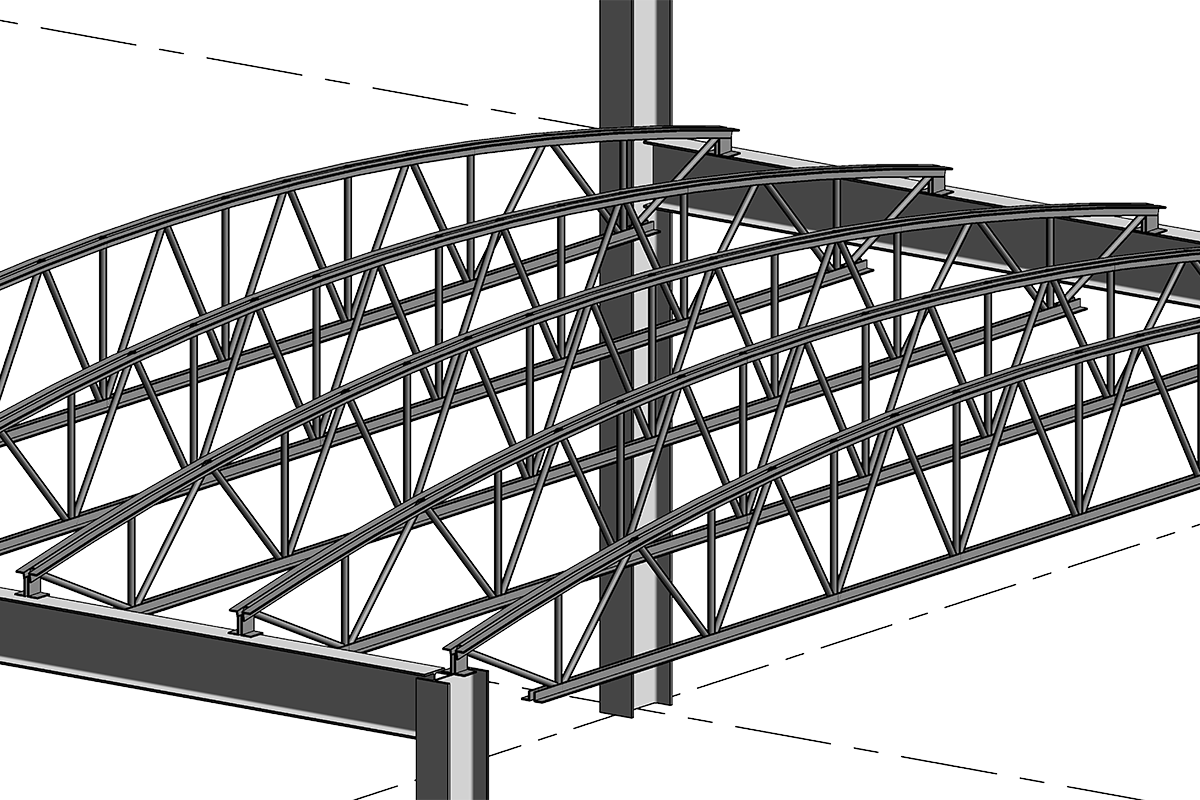
NUBIM® FOR TEKLA
With the NuBIM for Tekla Plug-In you can now build and manage projects more effectively within Tekla Structures. Vulcraft’s Joist Plug-In for Tekla Structures enables you to specify Vulcraft joists during the creation of the building model. The joist parameters from the model can then be exported directly into Vulcraft’s Detailing and Design Programs.
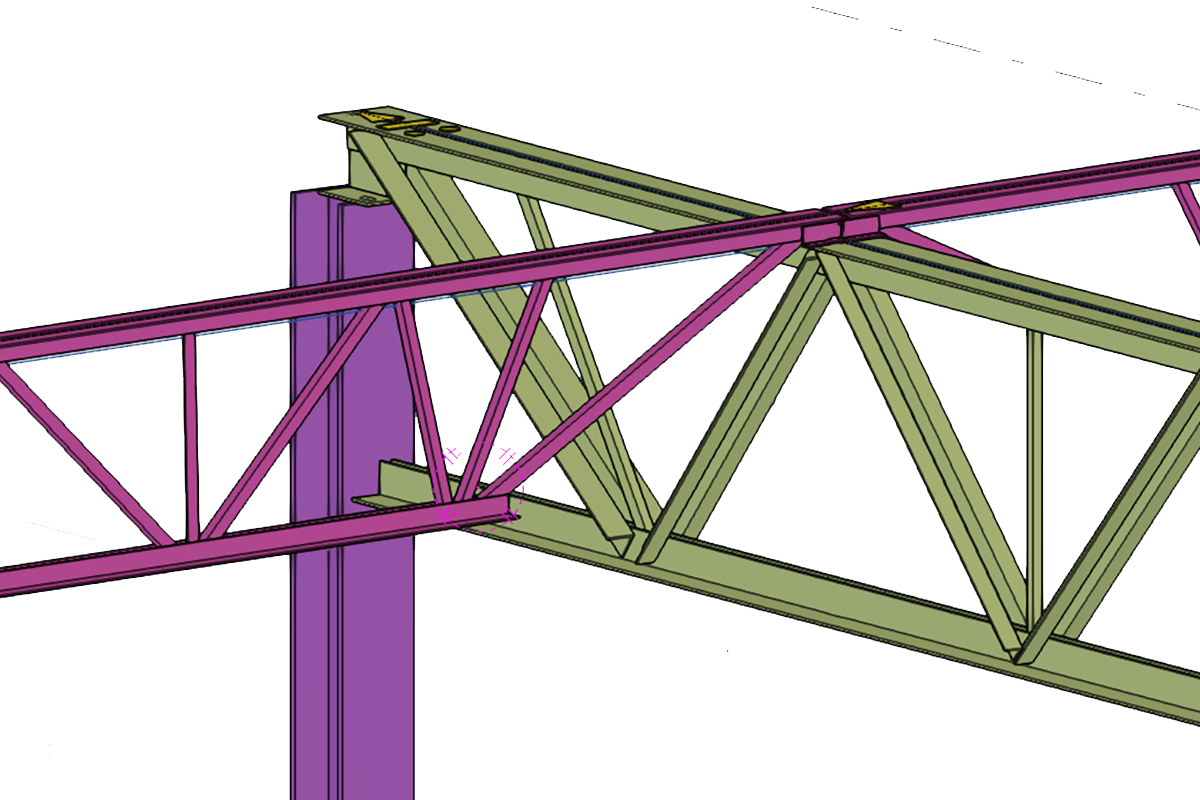
NuBIM® VULCRAFT PLUGIN FOR REVIT STRUCTURES
Vulcraft/Verco Group’s NuBIM® Add-In for Revit® 2024 is Now Available!
EXISTING FEATURES
- Joist Types Available: K, KCS, LH, DLH, CJ, Ecospan®, Joist Girder
- Special Profile Joists: Scissor, Archchord, Bowstring, Double Pitch, Multi-Pitch, Single Pitch
- Special Profile joists now have more flexibility for end depths and mid-span depths
- Joist End Tagging allows you to automatically place joist end data on your drawings
- Joist Loading Specification has been improved
- Joist Load Tables can be placed on drawings like any other standard Revit schedule
- All joist families show Conceptual Web Layouts at fine detail level
- Joist seats automatically adjust based on the slope of the joist
- Vulcraft/Verco deck profiles, including the new Dovetail Deck, are also available through the NuBIM Add-In for complete specification of your Revit floor/roof system
NEW FEATURES FOR 2017 — 2024!
BATCH PRINTING TOOL- Can create individual or combined pdf’s
- Automatic paper size selection
- Multiple sheet sizes in the same print
- Upgraded for more flexibility
All of these features combine to increase efficiency and improve accuracy when developing the model and creating the contract drawings on your projects.
At Nucor’s Vulcraft/Verco Group, it is our goal to provide high-quality products and service while keeping our costs low. With the NuBIM Add-In for Revit, we can continue to deliver on this commitment and help our customers gain efficiencies and better accuracy within their joist and deck specification process.
NuBIM® VULCRAFT PLUGIN FOR TEKLA STRUCTURES
Specifying joist and deck is easier than ever NuBIM® Vulcraft plug-in for Tekla Structures
Now compatible with Tekla 2021*
ALL THE SAME GREAT FUNCTIONALITY AS BEFORE, NOW WITH:
Pre-Configured joists for Ecospan™ (E) and Composite Joist (CJ) Series Joists as well as Joist Girders.
NuBIM® – Vulcraft plug-in makes BIM even more powerful
Now you can build and manage projects more effectively with Vulcraft’s Joist Plug-In for Tekla Structures. Vulcraft’s Joist Plug-In for Tekla Structures enables you to specify Vulcraft joists during the creation of the building model. The model can be exported containing Vulcraft joist information, which can then be used by Vulcraft to aid in the quoting and detailing process.
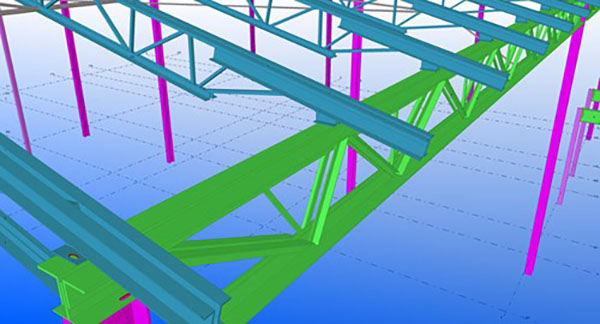
THIS GIVES YOU THE POWER TO:
- Model joists correctly for increased accuracy and higher quality.
- Place joists in your Tekla model with a pre-configured web (panel) layout.
- Quickly see exactly how a joist will fit in your model.
- Identify clashes that can be fixed virtually, avoiding field problems.
- Coordinate with MEP systems and other building trades.
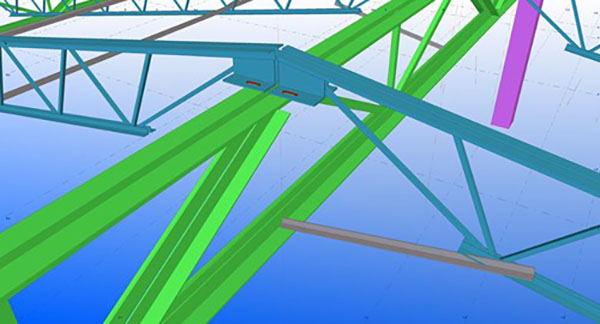
* NuBIM® Vulcraft Plugin for Tekla Structures is compatible with v17 through v2019
ADD-IN
Add-In is a term typically utilized by Revit users to refer to a set of software components that adds specific abilities to a larger software application. Add-In is similar in functionality and often interchanged depending on the software application with Parametric (typically SDS/2) and Plug-In (typically Tekla).
API
Application Programming Interface. API is a set of commands, functions, and protocols which programmers can use when building software for a specific operating system. The API allows programmers to use predefined functions to interact with the operating system, instead of writing them from scratch.
BIM
BIM is an acronym for “Building Information Modeling”. BIM is the creation and use of coordinated, internally consistent, 3D computable information about a building project that is in the design, construction, and management phases. BIM History - Driven by a need to reduce change orders and costly re-work at building construction sites resulting in budget overruns and finger-pointing, software engineers started looking at the application of data-based technologies for drawing tools. By combining drawing elements with information about those elements (parameters or meta-data), one can take designs to a higher level of accuracy, streamline construction coordination, and create a database of information useful throughout the entire life of the building. The database within a BIM model provides a single source of information that can be utilized for interference checking, design visualization, cost comparisons, and energy analysis. With all of the information being in a digital format, the building design can be evaluated and analyzed far more thoroughly than ever, well before any actual construction begins. Drawings, schedules, and construction specifications are coordinated with each other automatically through the model.
BIM EXECUTION PLAN - VULCRAFT
BIM Agreement between Vulcraft and Customer that will be provided by Vulcraft Sales and signed by the Customer before the job is sold.
BIM MODEL DISCLAIMER - VULCRAFT
Electronic transfer of BIM deliverables document that reinforces the terms of the BIM Execution Plan. This disclaimer will be provided with each electronic transfer of information by the Vulcraft detailer.
CIS/2
CIMSteel Integrated Standard, Product model and electronic data exchange file format developed exclusively for structural steel and endorsed by the AISC. CIS/2, like other neutral file formats, requires programs to have translators written to interpret the CIS/2 data into the programs’ native format.
EULA
End-User License Agreement between Vulcraft and each customer or user that downloads the Vulcraft Add-In for Revit and/or the Vulcraft Plug-In for Tekla. This agreement needs to be accepted before the downloads of the Vulcraft Add-In for Revit and/or the Vulcraft Plug-In for Tekla can occur.
FAMILY
Family is a Revit term for an Object in a Revit model that defines all modeled elements. Within Revit, some families are System Families, which cannot be changed or refined. Component or Loadable Families make up all other elements in Revit including most Add-In, including the Vulcraft Add-In for Revit joist families.
IFC
The Industry Foundation Classes (IFC) data model is a neutral and open file format extensively utilized worldwide for exchanging BIM. The IFC format was originally developed by the International Alliance for Interoperability established in 1995 by American and European AEC (Architecture, Engineering, and Construction) firms, along with software vendors, to promote interoperability between software in the industry.
IPD
Acronym for Integrated Project Delivery. IPD is a process where all disciplines in a construction project work as one firm, creating faster delivery times, lower costs, no litigation, and lower stress for all parties involved. Rather than each participant focusing exclusively on their part of the construction without considering the implications on the whole process, the IPD method brings all participants together early with collaborative incentives to maximize value for the owner. This collaborative approach allows informed decision making early in the project where the most value can be created. The close collaboration eliminates a great deal of waste in the design, and allows data sharing directly between the design and construction team, thereby resulting in increased construction productivity. Unlike the “Design-Build” project delivery method which places the Contractor in the leading role on a building project, with IPD the entire building team including the owner, architect, general contractor, building engineer, fabricators, joist suppliers, and subcontractors work collaboratively throughout the construction process.
OBJECT
Information is typically defined for a Building Information Model through the use of a building manufacturer’s objects. Thousands of BIM objects have been written which allow the user to define specific attributes for that particular building component. Once an object has been defined, it can be added to an electronic library and easily referenced should the user want to insert that particular component into the model.
PARAMETRIC
Refers to an object or family that has the ability to adapt to the model, via a defined set of parameters, that are user and computer code-driven/controlled. Also, a term typically utilized by SDS/2 software to refer to an Add-In or Plug-In.
PLUG-IN
Plug-In is a term typically utilized by Tekla users to refer to a set of software components that adds specific abilities to a larger software application. A Plug-In is similar in functionality and often interchanged depending on the software application with Add-In (typically Revit) and Parametric (typically SDS/2).
PYTHON
Type of programming language.
UDA
User-Defined Attributes. Typically utilized to specify information in BIM Objects that are not defined in the standard parameters. It can also be utilized to transfer additional information via IFC file transfer of objects to customer models.
VULCRAFT ADD-IN FOR REVIT
Vulcraft has developed a Revit Add-In for specifying Vulcraft joists and deck in the Revit model. Please see our Vulcraft Add-In for Revit software information here.
VULCRAFT PLUG-IN FOR TEKLA
Vulcraft has developed a Tekla Plug-In for specifying Vulcraft joists in the Tekla model. Please see our Vulcraft Plug-In for Tekla software information here.
XML
Extensible Markup Language — a simplistic rule-based code language utilized to communicate Vulcraft information to and from the structural models.
BATCH PRINTER
INFORMATION
Individual PDFs are automatically named base on parameters set up by the user (sheet name, number, etc.)
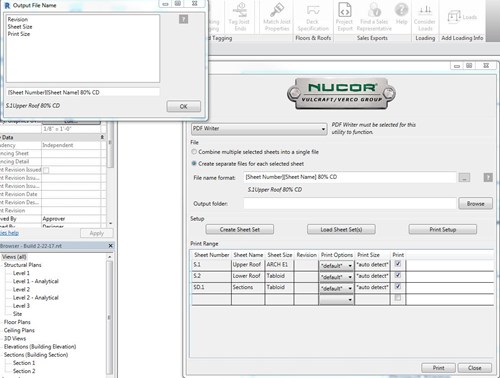
Revit requires you to name each file individually as it is printed. In addition, the default file names are long, and the default cannot be changed by the user to fit a different naming system.
Simple and intuitive creation, organization, and use of drawing sheet sets through the print dialog
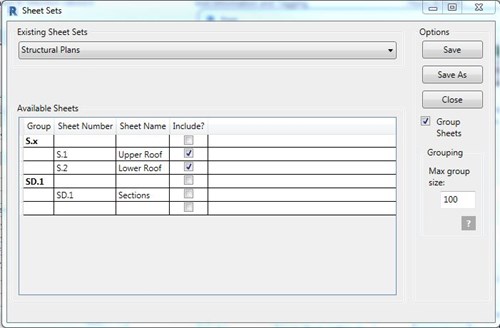
Revit does allow you to create sheet sets through the print dialog. The process is not easy to figure out with out being instructed how to accomplish it, and requires you to select each sheet individually.
Individual sheet PDFs can have different paper sizes when printed in the same session
Multiple sheets combined into one PDF can be created with multiple paper sizes within a single PDF

Revit only allows one paper size to be used when printing individual sheet PDFs in the same print session.
Revit only allows one paper size to be used when multiple sheets combined into a single PDF.
Paper size is automatically detected based on sheet size, even for print sessions with multiple sheet sizes

Revit has no auto-detect paper size capabilities.
SPECIAL PROFILE FAMILIES INFORMATION
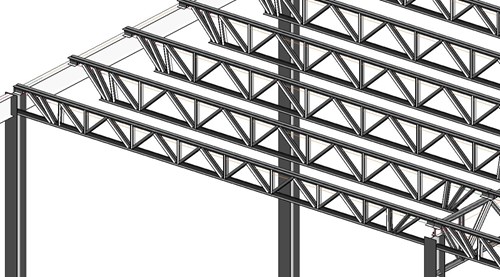
More realistic appearance
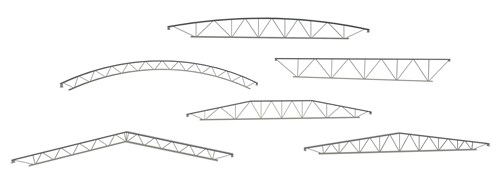
Greater range of special profiles – arch, bowstring, multipitch, scissor, single pitch
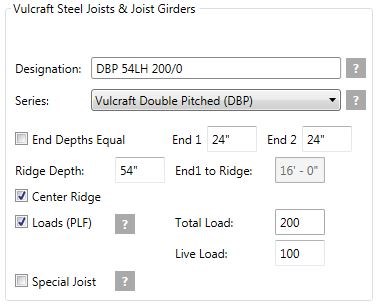
Easy to adjust parameters for Special Profiles
BWS, DBP, MP can have different end depths
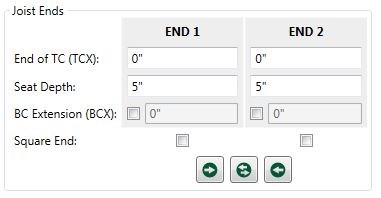
Customizable end and bearing conditions, Top Chord Extension, Seat Depth, Bottom Chord Extension
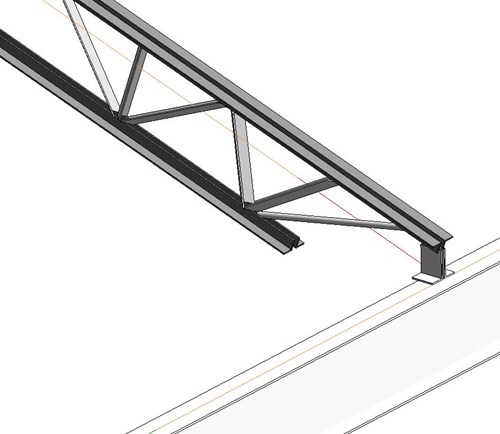
Seats can be sloped (Automatically if used with NuBIM Add-In)
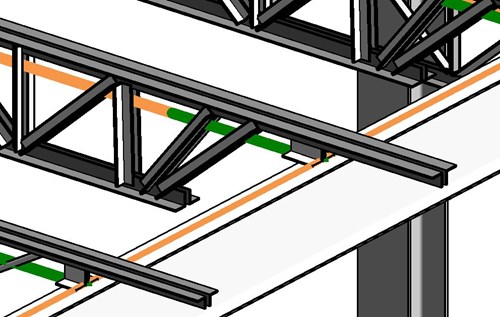
Analytical line/joist origin located at base of seats for easy insertion of joists at correct elevation
One family replaces multiple out of the box families – e.g. for double pitch you only need one of our joists whereas the out of the box joists require different families for different numbers of internal panels. Same for k with angles vs k with rods. It will automatically choose the correct type based on span, depth etc.
